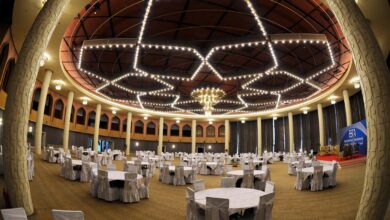Battle Of Hastings In England, 1066
In 1976 the property was put up on the market and purchased by the federal government with the assist of some American donors who wished to honour the two hundredth anniversary of American independence. The battlefield and abbey grounds are currently owned and administered by English Heritage and are open to the general public. The Bayeux Tapestry is an embroidered narrative of the events leading as much as Hastings in all probability commissioned by Odo of Bayeux soon after the battle, perhaps to hang at the bishop’s palace at Bayeux. In trendy occasions annual reenactments of the Battle of Hastings have drawn thousands of participants and spectators to the location of the original battle. It just isn’t identified whether the English pursuit was ordered by Harold or if it was spontaneous.
You know that The Battle of Hastings was a bloody struggle between the Normans and the Saxons, but how precisely were the Normans armed? Here’s every little thing you need to know about their armor and weaponry. The events that occurred after this are in dispute, but some argue that William used a second feigned flee as a tactic to attract the English closer, solely to launch a second counter-attack. The feigned retreat has been closely scrutinised by historians, with some rejecting the veracity of the incident because of the intricate organisation required to hold out the operation. But on condition that the Normans had already used the trick at Arques in 1053, and at Messina in 1060, there’s little cause to doubt the flexibility of Williamâs cavalry to employ this tactic at Hastings.
The incontrovertible truth that Harold had dismissed his forces in southern England on 8 September also contributed to the defeat. Many historians fault Harold for hurrying south and not gathering extra forces earlier than confronting William at Hastings, though it is not clear that the English forces have been inadequate to cope with William’s forces. Against these arguments for an exhausted English army, the size of the battle, which lasted a complete day, shows that the English forces were not tired by their long march. Modern historians have identified that one reason for Harold’s rush to battle was to contain William’s depredations and hold him from breaking freed from his beachhead. After defeating his brother Tostig and Harald Hardrada within the north, Harold left a lot of his forces in the north, together with Morcar and Edwin, and marched the relaxation of his military south to cope with the threatened Norman invasion.
French names predominated among the the Aristocracy and the military lessons; doubtless the Montgomery leading the British armies within the Second World War was a descendant of the Roger de Montgomerie who fought for http://www.jerseyibs.com/courses/course_details/1170 the Conqueror. William the Conqueror died following the seize of Mantes in 1087, leaving England to be ruled by William II and Normandy by his eldest son Robert. He had despatched an insulting demand that Harold pay him homage and the gathering of the troops and ships had northern France in turmoil, causing Harold to assemble a powerful military along the Sussex coast in defence. Among the preventing knights of Northern France who joined William had been Eustace, Count of Boulogne, Roger de Beaumont and Roger de Montgomerie. The clergy was nicely represented; amongst them Odo, Bishop of Bayeux, Williamâs half brother, and a monk René who introduced twenty fighting men and a ship, in the expectation of a bishopric in England.
Edward had died childless, leaving the succession in a precarious place. Harold, who was an Anglo-Saxon nobleman and brother-in-law to the king, was able to claim the best and have himself topped king with the assist of a number of different Anglo-Saxon nobles. William, a distant relative to Edward, claimed the king had promised him the throne in 1051 when Edward had been in exile in Normandy. William spent months getting ready for the invasion of England, even gaining the help of Pope Alexander II. The pope declared the conquest of England would carry the identical weight as a holy crusade. This gave William the help he needed for a successful invasion. Prior to the battle, whereas contention roiled between Harold and William, there were others with ambition for the rule of the little island.
After William the Conqueror gained the English crown, French grew to become the authorized language of England for 300 years. This subject is wealthy in elements of British tradition, and matches completely with the 5ème history curriculum. Whether youâre on the lookout for inspiration for a city break, need to discover the UKâs spectacular coast and countryside or learn more about historic sites across the nation.
The core of Haroldâs army was his housecarls, maybe the finest infantry in Europe, armed with their horrible two-handed battle-axes. In contrast, the spine of Williamâs forces was his 2,000â3,000-strong cavalry pressure. At the Battle of Hastings, these completely different military cultures met head on. According to 12th-century sources, William made a vow to found the abbey, and the excessive altar of the church was positioned at the site the place Harold had died. More doubtless, the inspiration was imposed on William by papal legates in 1070. After the Dissolution of the Monasteries, the abbey’s lands passed to secular landowners, who used it as a residence or nation home.
The Anglo-Saxons had ruled the land for over 600 years for the reason that Roman occasions. Late afternoon a few of Haroldâs males broke their shield wall to chase the Normans who they thought were retreating. This was to be their biggest mistake because no sooner had the Normans reached the underside of the hill they turned spherical and cut the English to bits.
âThe skeleton is seemingly distinctive in that it appears to be the one individual ever recorded which could be related to the Norman invasion. A outstanding new story could be unfolding,â said Tim Sutherland, a battlefield skilled from the University of York. The Battle of Hastings was a serious turning point in English history. William’s claim to the throne was robust, and he was in a position to again it up with drive. Perhaps probably the most uncared for weapon of the Norman interval is the crossbow, which was virtually certainly recognized to and used by the Normans well before 1066.




